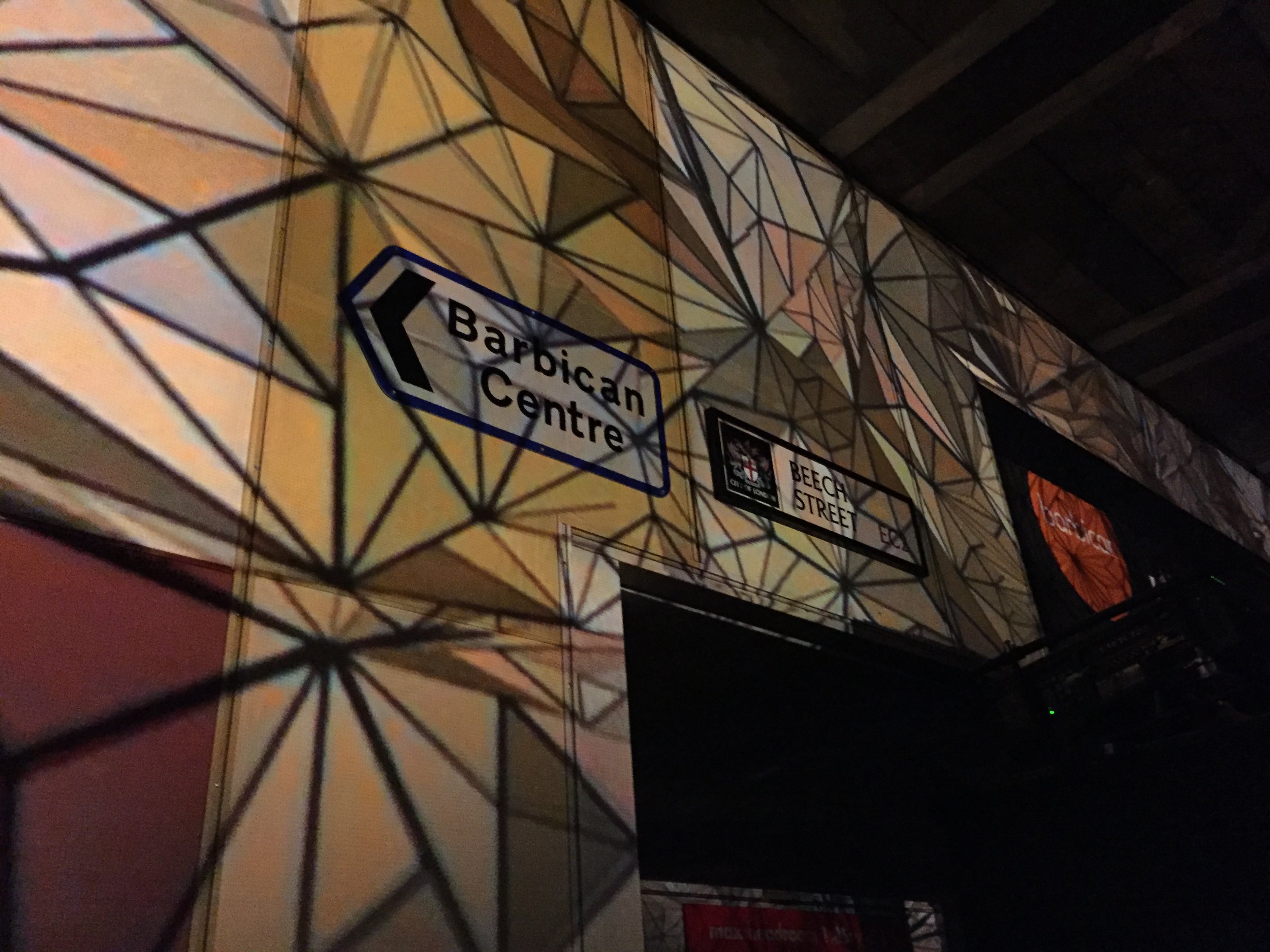At the first time of properly visiting the Barbican Centre, a lack of knowledge about the site led me on an elongated walk to the Silk Street entrance through the unremarkable Beech Street tunnel. Busy with cars, I found myself questioning whether it was even intended for pedestrians to walk through.
Last weekend, closed to vehicular traffic, that very same tunnel was transformed into a human-scale kaleidoscope for a free light and sound art installation called Tunnel Visions: Array - all part of Barbican OpenFest. Projectors and speakers lined the sides of the tunnel, an impressive technical set up that never faltered despite Siberian weather again gripping the country.
Nor did the half hour running time ever drag; the installation filled its concrete canvas and dwarfed the audience. In freezing temperatures, the show had moments capable of both warming viewers and of sending shivers of a different sort down the spine. Quite the achievement!
The opening phase had an optimistic sci-fi feel to it, reminiscent of the original Star Trek television series. On several occasions I thought I heard parts of William Shatner’s 1968 album The Transformed Man, and expected to hear the actor’s voice boom through the tunnel with his unique rendition of King Henry the Fifth or Lucy in the Sky with Diamonds.
Relatively simple patterns were combined with a sensation of travelling among the stars, but the complexity and intensity of both the light and sound soon started to change and build.
In the peaks of its different phases, Array represented a battle of wills and philosophies: order vs chaos; geometric vs fluid; bleak colourscapes vs rainbows. At one point, a dazzling light display was instantaneously supplanted by a static, imposing red and black colour scheme. The sense of oppression, of an unseen authority reasserting its dominance, was palpable.
By contrast, another moment used warmer shades of red with a complex fallen leaves pattern for an autumnal mood that briefly banished the biting late-winter chill.
I would have gladly stood in that chill for another half hour to take in the whole installation again, but it was necessary to vacate the tunnel ready for the next performance. A lot of credit and thanks must go to the Barbican and 59 Productions for creating such an imaginative and evocative installation, all offered at no charge to the audience.
